Bloodstain Pattern Analysis Test
1/44
There's no tags or description
Looks like no tags are added yet.
Name | Mastery | Learn | Test | Matching | Spaced |
|---|
No study sessions yet.
45 Terms
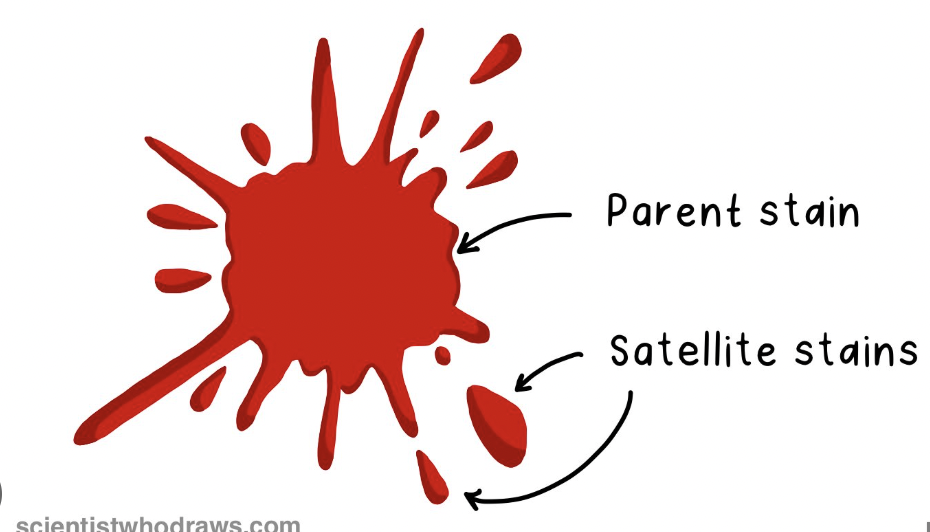
Satellite Pattern
small drops of blood distributed around the perimeter of the drop or pool of blood
produced as a result of the blood impacting the target surface.
ORIGINATES FROM PARENT DROP

angle of impact
angle formed between the path of the blood drop and the surface it contacts.
impact splatter
produced when object makes forceful contact with a source of blood and projects drops of blood outward from source.
forward splatter
blood travels away from the source in same direction as force that caused the splatter
back splatter
blood directed back towards the source of the force that caused splatter.
can be caused by gunshot or other trauma

low velocity splatter
An impact spatter pattern is created by a force traveling at 5 feet per second or less and producing drops with diameters greater than 3 millimeters
usually stab wound or punch
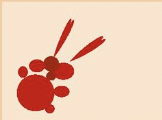
medium velocity splatter
An impact spatter pattern is created by a force traveling at 5 to 25 feet per second and producing drops with diameters between 1 and 3 millimeters.
blunt force of other intense beating
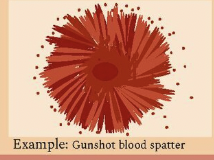
high velocity splatter
An impact spatter pattern is created by a force traveling at 100 feet per second or faster and producing drops with diameters less than 1 millimeters
gunshot or other explosive force
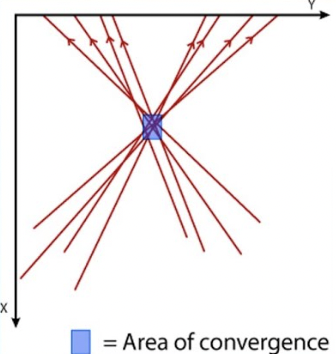
areas of convergence
area of 2-dimensional plane where lines traced through long axis of several individual bloodstains meets. location of a blood source
area of origin
location of 3 3-dimensional space in which blood that produced a blood stain originated.
The location of the area of convergence and angle of impact for each blood stain was used to approximate this area.
the string method
a technique used by investigators to determine the area of origin of bloodstains at a crime scene
gunshot splatter
characterized by both forward splatter from an exit wound and back splatter from an entrance wound.
(only if bullet does exit the body)
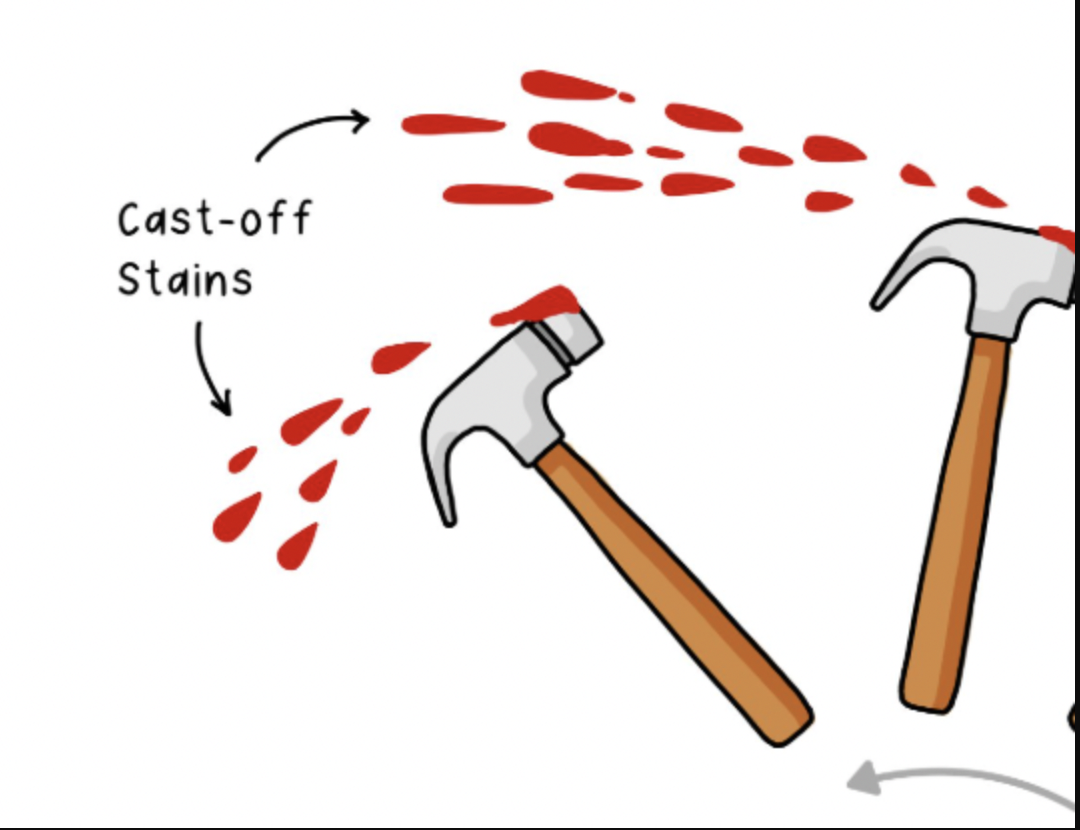
cast off
bloodstain pattern that is created when blood is flung from blood-bearing object in motion onto a surface
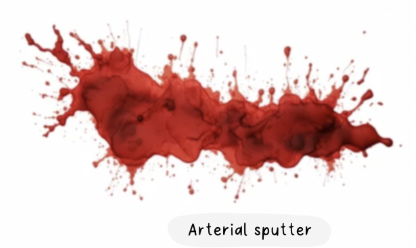
arterial spray
characteristic blood stain pattern containing spurts that result from blood exiting under pressure from an arterial injury (from heart or other main arteries)

expirated blood pattern
created by blood that is expelled out of the nose, mouth or respiratory system as a result of air pressure and or airflow.
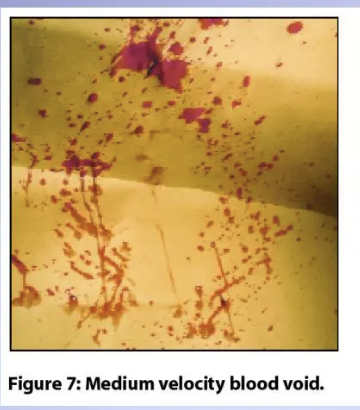
void
features an area free of spatter where an object (or person) blocks the deposition of blood spatter onto a target surface or object.
the shape of the void may give a clue as to the size and shape of the missing object or person.

transfer pattern
A bloodstain pattern is created when a surface that carries wet blood comes in contact with a second surface
Passive bloodstain
A bloodstain pattern formed by the movement of small/large amounts of blood as a result of gravity’s pull.
“pool”
occurs when blood collects in a leveled and undisturbed place.
skeletonization
The edges of a stain dry to the surface in a specific period of time. will remain apparent even after the rest of the bloodstains are distributed.
documenting bloodstain evidence
investigators should note, study, and photograph each pattern and drop.
drop trial pattern
A pattern of bloodstains formed by the dripping of blood off a moving surface or person in a recognizable pathway separate from other patterns
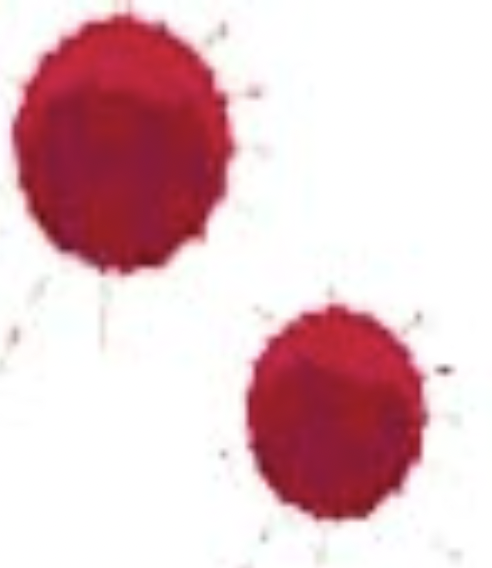
what type of drop is this?
passive

what type of drop is this
arterial gushes
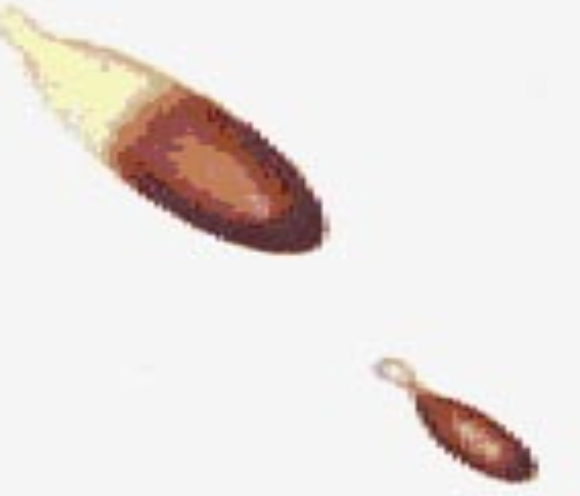
what type of drop is this
splashed

what type of drop is this
smears
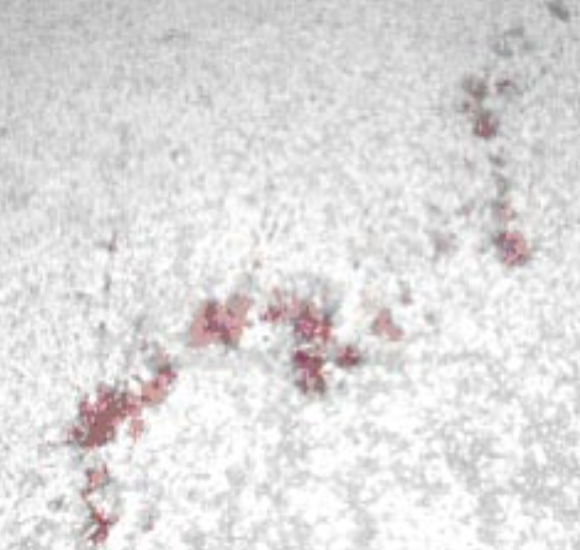
what type of drop is this
trails
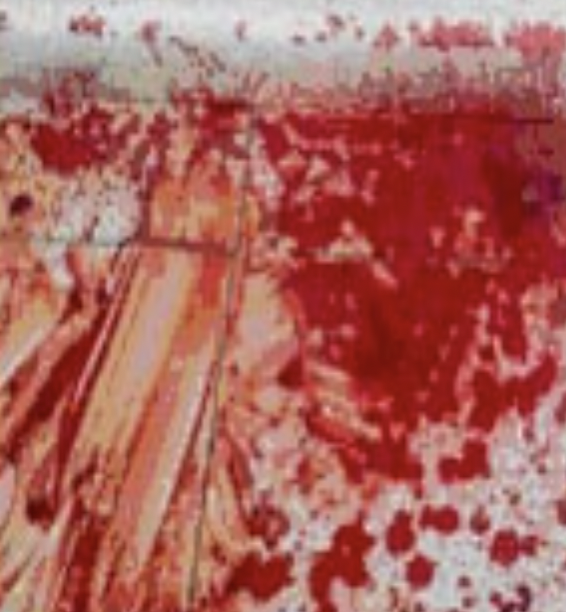
what type of drop is this
pool
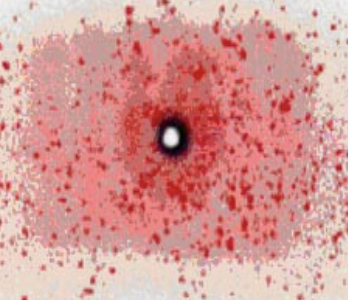
what type of weapon was used?
gunshot
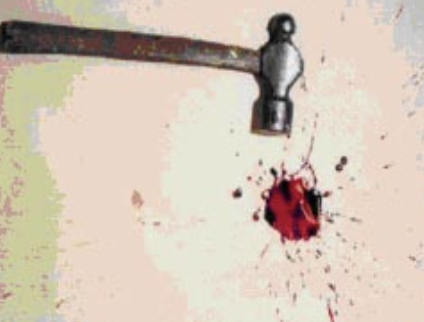
what type of weapon was used?
hammer
what type of pattern occurs on smooth tiles
less spatter, circle and round
what type of pattern occurs on carpet or wood
results in irregular shaped stains with serrated edges and satellite spatter.
what shape occurs at 90 degree aoi
circular/dark drops
most common type of bloodstain pattern found at a crime scene is…
…impact spatter
what is the shape of a bloodstain at angle of 15 percent
enlongated
bloodstain at angle of 50
circular with spikes and satellite
violent crimes between individuals at a crime scene often result in..
bloodstain patterns
harder and less porus surfaces (glass) result in…
…less spatter
rough surfaces (wood) produce stains with more…
spatter and serrated edges
the first transfer of movement of a blood object across a surface will be _____ and then quickly get ____ in color
dark, lighter
a person who was running typically shows more what in between the stains?
there is typically more space in between the stains
the most important part of interpretation of bloodstain patterns is
The surface texture
how can an investigator tell the direction of travel of blood from a stain?
the end/tail of bloodstain faces direction of travel
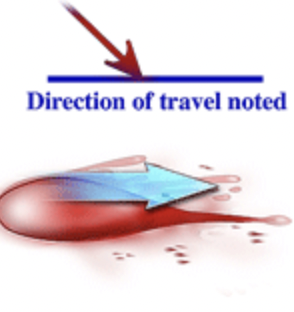
the higher the force and velocity of impact spatter…
the smaller the diameter of the drop becomes.
when the blood drops from a higher height, the diameter gets
larger/biggee